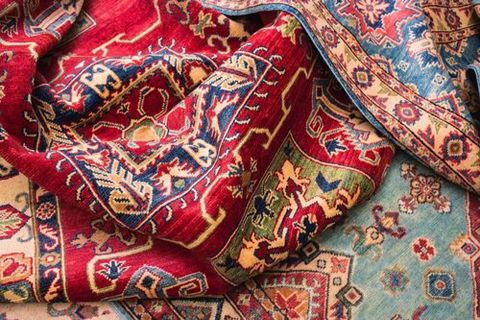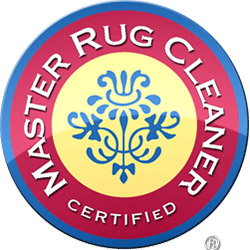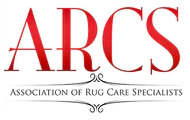A History of Area Rugs
Area rugs are a modern convenience used to soften the look of a tile or concrete floor, but they weren't always put to such functional use. In the beginning, rugs eventually evolved into wonderful works of art and were mass-produced in the West, making them accessible to a much wider audience than would have been possible with imports of the same quality made locally.

THE ORIGIN OF THE RUG
The original rugs were made thousands of years ago by nomadic nomads in central Asia. The nomads had an abundance of wool to use in the production of rugs. Since they herded sheep, so they had plenty of wool. They also lived in a frigid climate, which made woolen products desirable because they provided warmth and comfort. They made rug production easier by making it portable, improvised horizontal looms that were put on the ground.
As opposed to their distinctive functions today, rugs have historically served as:
- Saddlebags
- Table and bench coverings
- Wall tapestries
- Tent flaps
ORIENTAL AND PERSIAN RUGS
Traditional "Oriental rugs" originated in Asia, although their roots can be traced back to earlier nomadic cultures. During this era, the most popular type of Oriental rug was the Persian rug, a subset of rugs originally produced in what is now Iran.
The Pazyryk carpet is the world's oldest rug. It was made between the 5th and 4th centuries B.C. It was uncovered in the Altai Mountains of Siberia, where it had been buried for centuries. The total dimensions of the carpet are 72 by 79 inches, and it was crafted from tightly knotted wool. Among the many detailed elements in the design are crosses, lotus blossoms, deer, griffins, and men riding horses.
The second-oldest carpet is the magnificent Ardabil carpet. This carpet is one-half of a pair. The other half, the Coronation carpet, had to be partly destroyed in order to fix the first. Safi al-Din Ardabili, the founder of the Safavid dynasty, commissioned the rug in 1539/40 A.D. to decorate his tomb. Its massive dimensions of 34.5 by 17.5 feet and density of 340 knots per square inch make it ideal for elaborate and well-coordinated patterns. The rug features two lights separated by elaborate floral indications and a huge golden medallion encircled by colorful ovals.
Both rugs are reflective of the prevailing social norms of their time and show the long tradition of rug making in Asia (and in particular, Persia). Here, each tapestry would feature the distinctive knotting method and design motifs of its respective location or creator, for instance. Moreover, floral designs were associated with urban manufacturing, whereas geometric motifs were more typical of rural communities and nomadic peoples.
During this historical period, rugs were knotted using wool and silk, and the below natural materials were used for dyeing:
- Cochineal
- Madder
- Kermes
- Larkspur
- Oak
- Sumac
- Turmeric
- Pomegranate
- Indigo
- Mulberry bush fungus
- Saffron
- Iron and vinegar
- Walnuts
INTRODUCTION OF RUGS TO EUROPE
Immediately when Asian and European trade became more common, rugs entered the mainstream market. With the introduction of Islam to Spain and Eastern Europe, more people were exposed to Islamic prayer rugs. Again, while rugs were becoming increasingly popular in Venice, traders were bringing them there from Istanbul. Moreover, rugs from Italy gained popularity among the country's rulers and nobility, further establishing their place in European culture.
THE MECHANIZATION OF RUG MAKING
The modern rug industry didn't take off in the United States until the advent of mechanization made them accessible to middle-class families. In the absence of modern rugs, Americans have historically used:
- “Rag” rugs
- Designer rugs on burlap backing
- Hooked rugs
- Birdseye carpet
- Venetian carpet
- Straw mats
- Shawl striped carpet
In 1838, when Erastus Bigelow invented the power loom, the carpet-weaving industry was revolutionized. The speed of weaving rose by a factor of two to three, resulting in lower production costs and more sales. The Jacquard mechanism, developed by the Frenchman Joseph Marie Jacquard in 1849, was added to these looms by 1850, allowing a single worker to create more complex rug designs. The system functioned in a manner analogous to that of pianolas and early computers in that the intended rug pattern was transferred to a punched card.
Catherine Evans Whitener, a Georgian who manufactured handcrafted bedspreads and rugs in the early 20th century, is credited with bringing the tufted carpet technique to the United States. Her chenille-style rugs gained popularity with the development of the tufting machine in the 1930s, and with the introduction of synthetic rug materials in the 1940s and '50s, they became commonplace in American homes. More than 90% of rugs sold in the United States currently are tufted.
Preserve Your Historic Area Rugs With Great American Rug Cleaning
Due to its aesthetic value and practicality, ragas are one of the earliest forms of artistic expression. Pazyryk and Ardabil are examples of how long carpets can last with regular care. This highlights the importance of keeping your rug clean to preserve its heritage.
To keep your rug looking as good as new, Great American Rug Cleaning follows a meticulous 10-step procedure. In addition to our many other rug-related services, we now offer rug repair to restore your rug to its former glory. Call us anytime at 281-502-8878 for receiving a free cleaning estimate.
Sources
https://www.farnhamantiquecarpets.com, http://www.bashianrug.com, https://hermitagemuseum.org, http://www.lacma.org, https://www.sheffieldfurniture.com, http://www.danscarpet.com, https://www.thisoldhouse.com, https://www.oldhouseonline.com, http://americanhistory.si, https://www.carpet-rug.org, https://www.britannica.com, https://www.youtube.com,






